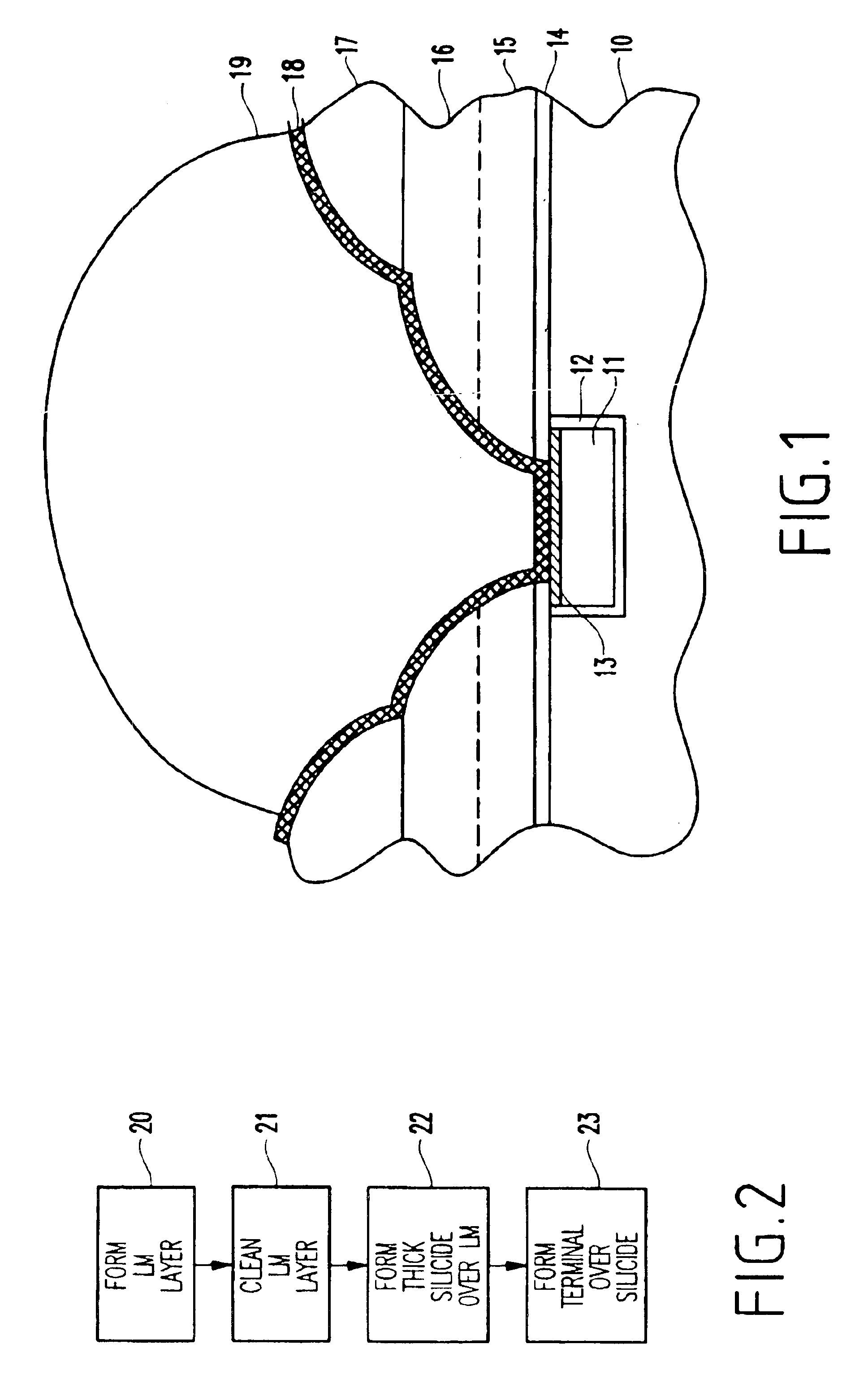Self-aligned copper silicide formation for improved adhesion/electromigration
a technology of self-aligned copper silicide and adhesion/electromigration, which is applied in the direction of semiconductor devices, semiconductor/solid-state device details, electrical devices, etc., can solve the problems of not providing sufficient coverage or uniformity, and not providing the required adhesion strength for the terminal layer
- Summary
- Abstract
- Description
- Claims
- Application Information
AI Technical Summary
Benefits of technology
Problems solved by technology
Method used
Image
Examples
Embodiment Construction
As described above, the conventional methods for improving adhesion between interior copper wiring layers and adjacent insulating layers do not provide sufficient reliability of the terminal layer (e.g., the C4 layer) over the last metalization (LM) layer. The invention solves this problem by cleaning the exposed copper wiring layer and increasing the thickness of the silicide layer above 10%.
Special problems exist with the adhesion of the last metalization layer because the last metalization layer is subject to higher levels and different forms of stress than are the other metalization lawyers within the structure. For example, the last metalization is often physically connected to a solder ball terminal layer which is used to make electrical and physical contact to exterior structures. The exterior structure moves differently (through physical movement) and may have different thermal coefficients of expansion which tends to place high levels of stress (including shearing forces) o...
PUM
 Login to View More
Login to View More Abstract
Description
Claims
Application Information
 Login to View More
Login to View More - R&D
- Intellectual Property
- Life Sciences
- Materials
- Tech Scout
- Unparalleled Data Quality
- Higher Quality Content
- 60% Fewer Hallucinations
Browse by: Latest US Patents, China's latest patents, Technical Efficacy Thesaurus, Application Domain, Technology Topic, Popular Technical Reports.
© 2025 PatSnap. All rights reserved.Legal|Privacy policy|Modern Slavery Act Transparency Statement|Sitemap|About US| Contact US: help@patsnap.com


